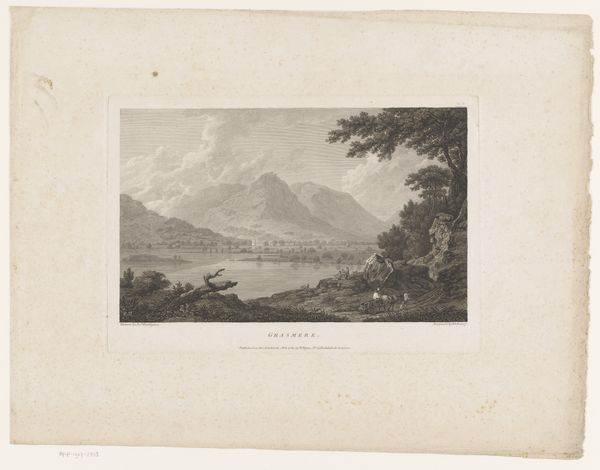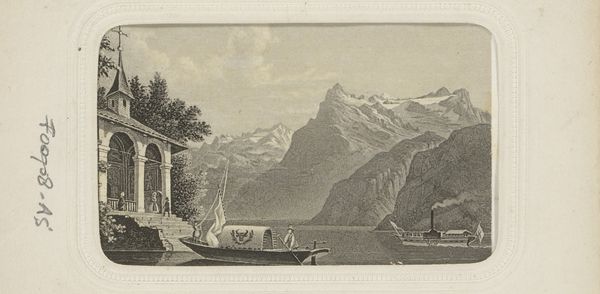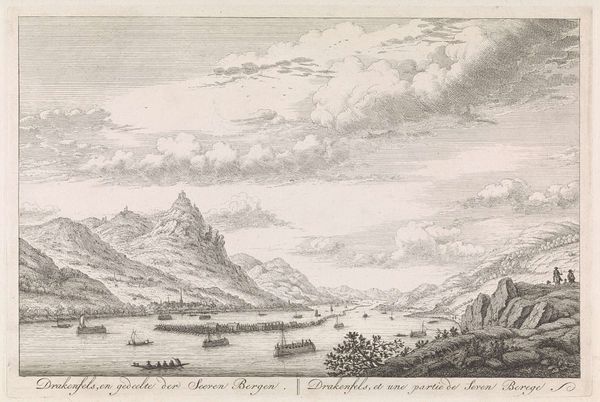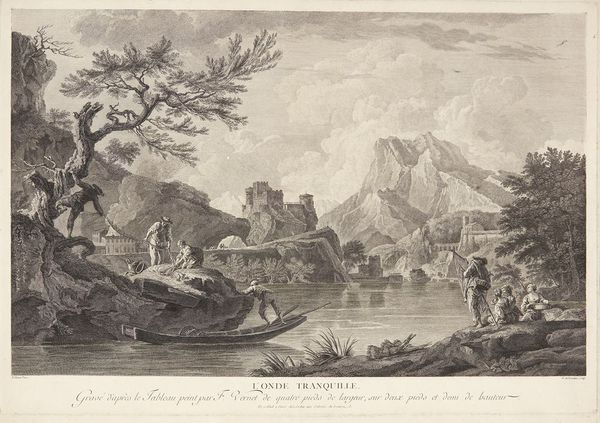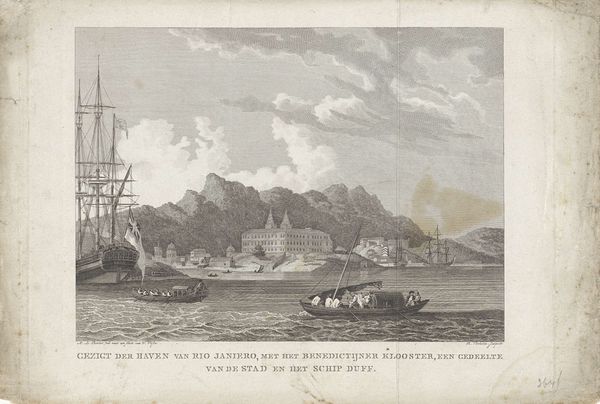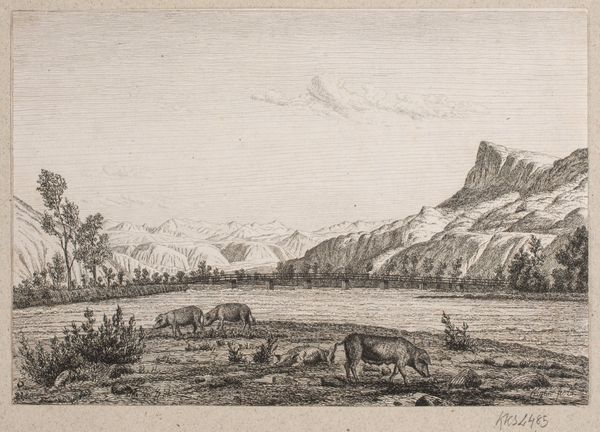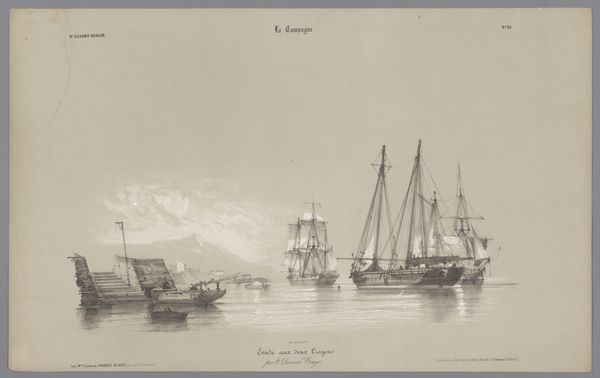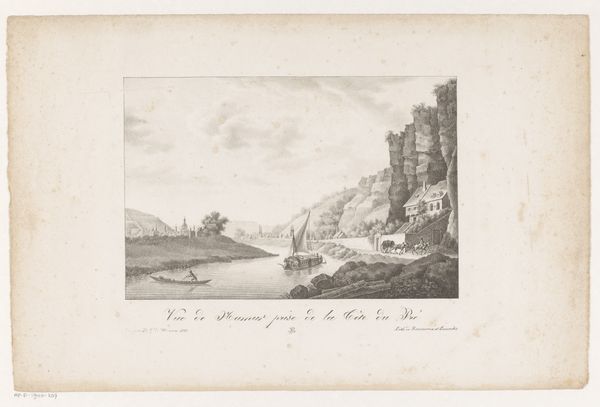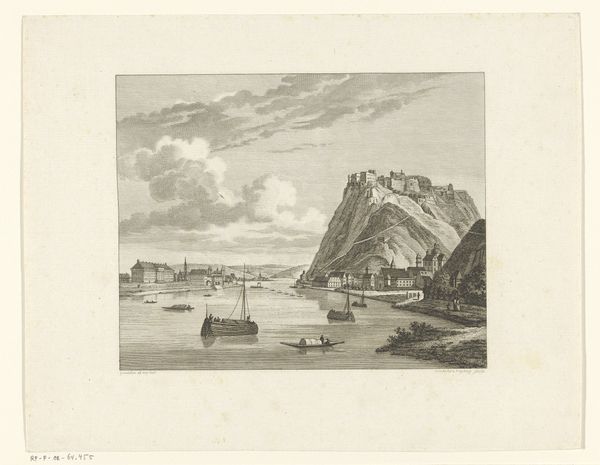
drawing, intaglio, pen
#
drawing
#
lake
#
intaglio
#
landscape
#
romanticism
#
mountain
#
pen
Dimensions: height 236 mm, width 340 mm
Copyright: Rijks Museum: Open Domain
Editor: This is "Zicht op de Thunersee," or "View of Lake Thun," created around 1820 by Constant Bourgeois. It looks like a pen drawing and an intaglio print. The details, like the figures in the boat and the mountains, give it a feeling of vastness and quiet contemplation. What compositional elements stand out to you? Curator: Primarily, the tension established by the meticulous rendering of forms throughout. Note the tonal precision achieved through carefully considered hatching and cross-hatching. This technique effectively defines the shapes of the distant mountains, as well as the surface texture of the water and even the built structures reflected in it. How does this linear precision shape your interpretation of the space? Editor: It almost flattens it. Everything is in focus, which reduces the depth. Also, the symmetry is compelling. Curator: Exactly! The balance of the composition emphasizes not only depth, but also line itself, thus disrupting the immediate recognizability of depth. This play of flatness and volume introduces formal complexity. Does it seem the artist had any theoretical engagement with perspective? Editor: The linear perspective isn't perfect, right? It almost feels like he prioritizes the symbolic weight of each form over strict realism. Curator: An excellent observation. Perhaps, rather than achieving perspectival accuracy, the aim was to express a conceptual mapping of the space. Did anything surprise you in the visual structure of the piece? Editor: I hadn’t really thought about the formal choices. I was more focused on what the drawing represented: the landscape. Now, looking closely at the marks and forms themselves, I notice that this piece has a more elaborate structure than I originally thought. Curator: Yes, exactly! A more thorough examination, focusing on shape and tone, opens new depths of comprehension. It gives the artwork itself its independent existence.
Comments
No comments
Be the first to comment and join the conversation on the ultimate creative platform.

